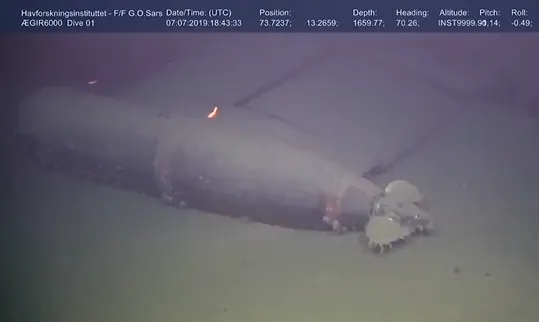
Radiation near sunken Soviet-era sub 800,000 times above normal
An investigation into a sunken Soviet nuclear submarine that has been on the ocean floor for 30 years has found that it is leaking an abnormally high amount of radiation, according to the Institute for Marine Research. The researchers state that the leak does not pose any risk to people or marine life.
The submarine, named the Komsomolets, sank in April 1989 approximately 217 kilometres southwest of Norway's Bear Island after a fire started in the engine room. The submarine sank while carrying two nuclear torpedoes with plutonium warheads.

The wreck has been monitored by researchers since the 1990s and a white-ish cloud rising up from the submarine's ventilation duct has caught the researchers attention.
The high radiation levels have been recorded in this cloud above the duct and researchers have recorded cesium levels that are 800,000 times the normal amount of cesium that is naturally found in the ocean.
Cesium is a radioactive element that is relatively common in nuclear weapons and researchers have assured that these levels are not alarming because it is quickly diluted by the ocean and only a small number fish live in the area of the wreck, which is over 1,600 metres deep.
In an interview with Reuters, expedition leader Hilde Elise Heldal of the Norwegian Institute of Marine Research said that “This is, of course, a higher level than we would usually measure out at sea but the levels we have found now are not alarming."
Sources: Reuters | CNN | Institute for Marine Research | BBC









